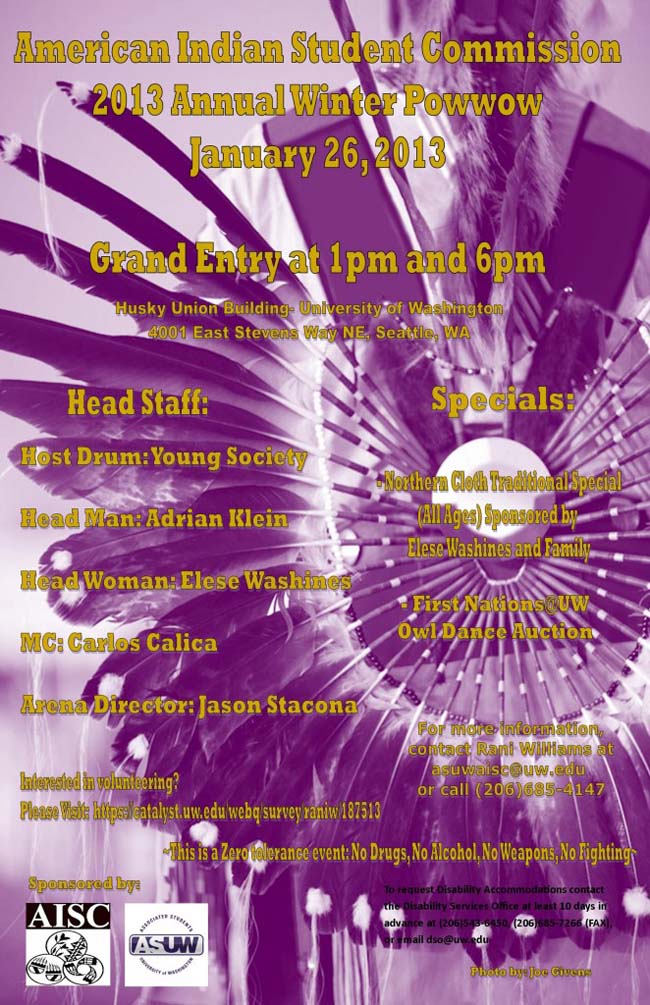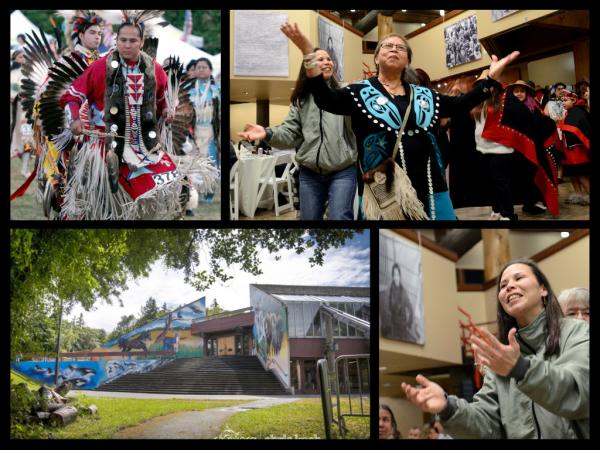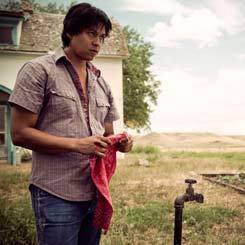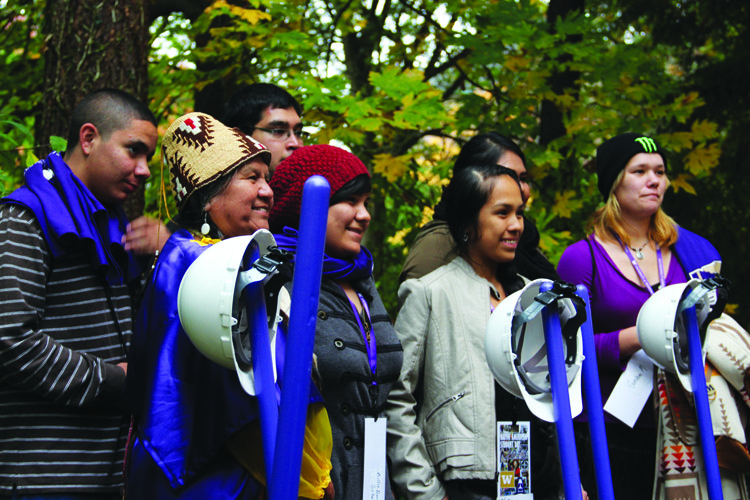Cassandra Profita, Earth Fix
Northwest sports teams are leading an effort to use the widespread appeal of basketball, football, baseball and hockey to spread an environmental message.
A group formed by six teams in Portland, Seattle and Vancouver, B.C., called the Green Sports Alliance set out three years ago to improve the environmental performance of professional sports. The alliance has grown to hundreds of teams across the country that are now competing to see who can be the greenest.
Baseball fields, basketball arenas and football stadiums across the country are installing solar panels and wind turbines. They’re selling local and organic food to their fans, and replacing trash cans with recycling and compost bins.
Supporters of this movement say sports offer a fun, non-political way to promote environmentalism. It saves money, cuts carbon emissions, and the environmental benefits count toward the teams’ record of community service.
Tracking Green Stats
The green sports game isn’t as exciting to watch as a slam dunk, a home run or a touchdown. But it has racked up some impressive stats:
- The Portland Trail Blazers have cut the carbon emissions at the Moda Center by 50 percent since 2008 and saved $3.3 million in utility costs in five years.
- The Seattle Seahawks and Sounders installed the largest solar array in the state of Washington at CenturyLink Field in 2011; and
- The Seattle Mariners raised their recycling rate from 38 percent in 2010 to 90 percent in 2013 and saved $2.2 million in utility costs in seven years.
The teams are tracking their environmental performance with help from the Natural Resource Defense Council and the Environmental Protection Agency. So they know where they stand in the environmental rankings. According to Martin Tull, executive director of the Green Sports Alliance, that has spurred some friendly competition.
“When one facility puts up 3,000 solar panels, the next time an owner is going to build a stadium, he wants to have 3,001,” Tull said. “We try to use that as much as we can to give them little catalyst to have the biggest solar array or to have the least energy used.”
Scott Jenkins, vice president of ballpark operations for the Seattle Mariners, said his team has been trying to match the San Francisco Giants’ recycling rate for years. This year, the Mariners fell a little short once again as the Giants reached a 95 percent recycling rate.
“Every time I think we’re going to catch up to them they raise the bar a little bit more,” Jenkins said.
Tracking environmental performance has also yielded some interesting data. When the Blazers commissioned a study to measure their carbon footprint in 2008, it revealed that 70 percent of the carbon emissions associated with the Moda Center come from fan and employee transportation to and from the arena. Team transportation and business travel, by comparison, only accounted for 4 percent of the team’s carbon emissions.
“That surprised us all,” said Justin Zeulner, sustainability director for the Blazers. “We realized we have to start engaging with our fans and our community to get to our impacts because they’re the ones selecting behavior. They’re the ones that decide: How am I going to get to the game?”
Making it fun
Sports teams aren’t looking to bog people down with environmental doom and gloom. Instead, they say, they try to make the idea of sustainable living fun. One hockey arena, for example, invites fans to shoot aluminum cans into the proper recycling receptacle.
The Mariners introduced two recycling superheroes: Captain Plastic and Kid Compost. They roam the concourse of Safeco Field offering photo ops and recycling and composting assistance. The compost from the games goes to Cedar Grove Composting, which in turn creates bags of Safeco Soil made from compost at its facility. Fans can take that compost home to use in the garden; the team also offers “kitchen catchers” to hold household food scraps.
The Blazers have a living wall that invites fans to high-five a hand print if they support the team’s environmental mission. It also has a chalkboard for people to share how they’re going green in their own lives.
Watch the video:
Saving money
Tull says money is another motivation for teams going green – and one the alliance uses to attract new members.
“When we sit down with a new team that we haven’t worked with we ask a very simple question: Would you like to learn how other teams have saved millions through conservation,” he said. “And what do you think they say? They say hell yeah.”
Northwest sports teams are among the first to prove that conservation measures such as replacing light bulbs and reducing water use at event centers have a quick return on investment.
“When you look at your bottom line and say I’m saving $400,000 a year in utilities, I’m saving $200,000 a year on my waste costs, and I’m building brand value and doing what’s right, it really is a no-brainer to get into that area,” said Scott Jenkins, vice president of operations for the Mariners.
Selling environmentalism
For those who are rooting for a cleaner environment, Tull says, sports teams are a great way to sell the idea to a mass market.
“If I talk to a middle school student and say, ‘Did you realize the Portland Trail Blazers cut their energy use in their house by 30 percent?’ It’s a lot more exciting than if we say, ‘Did you realize that this local bank did a retrofit and cut their energy use?’”, said Tull. “Even with the exact same statistics it’s always going to be more exciting if it comes through the lens of sports.”
Allen Hershkowitz, director of the Natural Resource Defense Council’s Sports Greening Program, says his environmental group hatched the idea of using sports to sell environmentalism back in 2004.
Sporting events themselves don’t have huge environmental impacts, he says, “however, where the impact of sports is enormous is in its cultural and market influence. The cultural and market influence of sports is almost unparalleled.”
He cites a statistic: 13 percent of Americans follow science while 63 percent follow sports.
“So, if you want to reach Americans, you’ve got to go where they’re at,” he said. “Using the non-political, non-partisan, politically neutral space of basketball, baseball, football, hockey, tennis, soccer to educate people about the need for recycling, energy efficiency, water conservation and safer chemical use. It’s a spectacular platform and at the same time tens of millions of pounds of carbon have been reduced.”
Peter Murchie is an environmental health manger for the EPA in Seattle. He says his agency is hoping that fans will take environmental lessons home with them from the big game. He’s hoping the movement will trickle down to younger sports teams, too.
“Sports translates down into your local communities,” he said. “If you see that the Seattle Seahawks or Portland Trail blazers being green, there’s a chance that your local little league and youth sports will also look at how they can do things in a more sustainable way. That gets an even broader marketplace.”
What about climate change?
So far, sports teams are leading by example and sticking with subtle environmental suggestions. However, this year several league commissioners sent letters to Congress acknowledging the issue of climate change.
The Trail Blazers are the first and only professional sports team to sign a climate declaration. Zeulner says he’s hoping the unifying nature of sports can move people beyond political barriers toward taking action on climate change.
“You can go to a sporting event and be sitting with people who are complete strangers to you, but you’re all focused on that energy of what’s happening on the field – what’s happening on the playing surface,” he said. “You start seeing people high-fiving each other, hugging each other over this thrill of whatever the sport is. The emotion of that sport. These are Republicans and Democrats. They’re different races. Different sexes. It doesn’t matter. Sports gives you that opportunity to strip all those barriers down and realize we actually want the same things.”
The Green Sports Alliance is already expanding into college sports and is now looking at the prospect of including teams across the globe in Europe and South America.



















